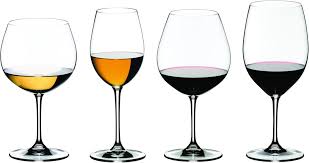Wine has been enjoyed for centuries all over the world and can be found in almost any cuisine. Wine comes in different colors, and two of the most popular are red wine and white wine. Both derive from grapes, but unique features and flavors differentiate red and white wine.. In this article, we will explore the differences and similarities between red wine vs white wine.
Color
The most apparent difference between red wine vs white wine is their color. Winemakers ferment red or black grapes with skins to produce red wine, which obtains color from pigments in skins. In contrast, they only ferment white or green grapes for white wine, which has no color as the skins get removed.
Flavor and Aroma
Red wine has a more complex taste profile compared to white wine. It has a combination of fruity, floral, spicy, and earthy flavors. Some of the most common flavors found in red wine are blackberry, black cherry, vanilla, tobacco, and leather. The aroma of red wine is also distinct, and many people describe it as warm, rich, and inviting. White wine, on the other hand, has a lighter and crisper taste. White wine often features citrus, refreshing, and floral flavors. Common flavors found in white wine include apple, pear, apricot, and peach. The aroma of white wine is often fruity, with notes of melon, lemon, and peach.
Tanning and Body
Another key difference between red wine and white wine is their tannin and body. Tannin in grapes causes dry, puckering sensation in wine. Red wine has a higher level of tannin compared to white wine, mainly due to the contact with the grape skins during fermentation. Tannins in red wine contribute to its characteristic taste but can also cause bitterness and astringent feeling.
Body is how heavy wine feels, based on alcohol, tannin and sugar content. Red wine typically has a heavier body than white wine. It has a richer texture and feels more full-bodied in the mouth, while white wine feels lighter and crisper.
Both red wine and white wine have health benefits, but red wine has been studied more extensively. Red wine contains resveratrol, a polyphenol that is believed to have antioxidant and anti-inflammatory properties, which can help protect against heart disease. White wine also contains polyphenols, but in smaller amounts than red wine.
Health benefits
In conclusion, there are significant differences and similarities between red wine and white wine. Red wine has a heavier body, more tannins, and a more complex taste profile than white wine. While white wine is lighter, more refreshing, and generally has lower alcohol content. Red wine has been studied more extensively for its health benefits. Moderate consumption of either red or white wine can have health benefits. Ultimately, the choice between red wine and white wine is a matter of personal preference and a desire to experience different flavors and aromas.


